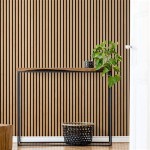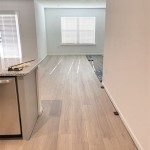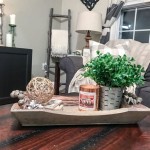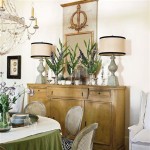Decorating Cape Cod Style Homes
Cape Cod style homes, originating in 17th-century New England, are characterized by their simple, functional design, reflecting the region's maritime history and practicality. Their enduring appeal stems from their cozy aesthetic, adaptability to various climates, and straightforward construction. Decorating a Cape Cod style home involves honoring its historical roots while incorporating modern sensibilities, creating a space that is both comfortable and reflective of its architectural heritage.
The defining features of a Cape Cod home often include a symmetrical facade, steep roof, central chimney, and dormer windows. Originally built for practicality against harsh weather conditions, these homes emphasize efficiency and warmth. Common interior features are hardwood floors, low ceilings, and a central fireplace. The decor should complement these architectural details, promoting a sense of understated elegance and coastal charm.
Embracing a Neutral Color Palette
A core element of Cape Cod style decorating is the use of a neutral color palette. This approach contributes to the light and airy feel often associated with coastal living. Whites, creams, beiges, and soft grays are foundational colors for walls, ceilings, and trim. These neutral hues provide a backdrop that allows natural light to permeate the space and emphasizes the architectural details of the home.
The selection of white paint is crucial. Consider varying shades of white to add depth and dimension without straying from the overall neutral aesthetic. For instance, an off-white with warm undertones can soften a room, while a crisp, clean white can create a more modern feel. The choice depends on the amount of natural light available and the desired mood.
Beyond white, incorporating shades of gray and beige adds sophistication and visual interest. Light gray walls paired with white trim offer a subtle contrast, while beige creates a warmer, more inviting atmosphere. These colors also complement natural wood tones, which are prevalent in Cape Cod style homes.
The use of color can be strategically applied through accent pieces and textiles. Subdued blues, greens, and yellows, reminiscent of the ocean and surrounding landscape, can be introduced through throw pillows, rugs, and artwork. However, it is important to maintain a balance, ensuring that these accent colors enhance rather than overwhelm the neutral base.
Consider the use of natural materials to further enhance the neutral scheme. Woven baskets, sisal rugs, and linen fabrics introduce texture and warmth, creating a layered and inviting space. These elements also contribute to the overall coastal aesthetic without relying on overtly nautical motifs.
Incorporating Natural Materials and Textures
Another key aspect of decorating a Cape Cod style home is the incorporation of natural materials and textures. This approach not only reflects the region's natural environment but also adds warmth, character, and a sense of authenticity to the space. The use of wood, stone, and natural fibers is integral to achieving the desired aesthetic.
Hardwood flooring is a hallmark of Cape Cod homes. Consider using solid hardwood floors or engineered hardwood floors that mimic the look of traditional wood. The finish should be either natural or lightly stained to showcase the grain of the wood. Wide plank flooring is particularly appropriate, as it evokes a sense of historical charm and craftsmanship.
Exposed wood beams, if present, should be highlighted and celebrated. They add architectural interest and contribute to the rustic appeal of the home. If beams are not present, consider adding faux beams to create the desired effect. The beams can be stained or painted to complement the overall color scheme.
Stone fireplaces are another common feature in Cape Cod homes. The stone can be left natural or painted to match the surrounding decor. Incorporating natural stone elements, such as stone countertops or backsplash, can also enhance the overall aesthetic. Selecting local stone varieties can further connect the home to its regional heritage.
Natural fibers, such as sisal, jute, and seagrass, are excellent choices for rugs and window treatments. These materials add texture and warmth while maintaining a casual and relaxed feel. Linen and cotton fabrics are also appropriate for upholstery and bedding, as they are breathable and comfortable.
Wicker and rattan furniture can be incorporated to add a touch of coastal charm. These materials are durable and versatile, making them suitable for both indoor and outdoor spaces. Consider using wicker chairs on a porch or rattan baskets for storage.
Maintaining a Sense of Simplicity and Functionality
Simplicity and functionality are paramount in Cape Cod style decorating. The emphasis should be on creating a comfortable and practical living space that is free from clutter and unnecessary embellishments. Every element should serve a purpose, contributing to the overall harmony and balance of the room.
Furniture should be carefully selected for its functionality and aesthetic appeal. Opt for pieces that are well-made, comfortable, and appropriately sized for the space. Avoid oversized furniture that can make the room feel cramped. Simplicity in design is key; choose furniture with clean lines and minimal ornamentation.
Storage solutions are essential for maintaining a clutter-free environment. Built-in shelving, cabinets, and drawers can provide ample storage space without sacrificing style. Consider using baskets and bins to organize smaller items and keep them out of sight.
Window treatments should be simple and functional. Avoid heavy drapes and ornate valances. Instead, opt for lightweight curtains, blinds, or shutters that allow natural light to filter into the room. Linen curtains are a particularly good choice, as they provide privacy while still allowing light to pass through.
Accessories should be carefully chosen and thoughtfully arranged. Avoid overcrowding shelves and tabletops with too many decorative items. Instead, select a few meaningful pieces that reflect your personal style and interests. Artwork should be understated and complementary to the overall color scheme.
Lighting is crucial for creating a warm and inviting atmosphere. Incorporate a mix of natural and artificial light sources. Table lamps, floor lamps, and sconces can provide ambient lighting, while task lighting can be used for reading and other activities. Choose light fixtures that are simple in design and complement the overall style of the home.
The kitchen, often the heart of a Cape Cod home, should be both functional and aesthetically pleasing. Simple cabinetry, durable countertops, and practical storage solutions are essential. Open shelving can be used to display dishes and cookware, adding a touch of rustic charm. A farmhouse sink is a classic choice that complements the style of the home.
Bathrooms should be designed with functionality in mind. Simple fixtures, durable materials, and ample storage space are key. A clawfoot tub can add a touch of vintage charm, while a walk-in shower provides practical convenience.

Cape Cod House Interiors How To Get The Charming Look Decorilla Interior Design

Cape Cod House Interiors How To Get The Charming Look Decorilla Interior Design

Modern Cape Cod Home Style Bunch Interior Design Ideas

Transitional Cape Cod Style Home Bunch Interior Design Ideas

Renovating A Cape Cod Style Cottage Living Room Updates

This Charming Cape Cod Cottage Has Nooks And Crannies Galore

5 Take Away Tips From A Charming Cape Cod Home The Inspired Room

Renovating A Cape Cod Style Cottage Living Room Updates

Cape Cod Home Decor Ideas To Try In 2024 Cyrus Rugs

Cape Cod Cottage Classic Style Decorating Renovating And Entertaining Ideas For Indoors Out








